Trelissick (GWR Branch Line) O Gauge
If any of you have been to Cornwall you may have come across the Trelissick estate, located in Feock on the banks of Carrick Roads, the estuary for the River Fal. In our world here is the history of Trelissick.
The GWR had wanted to build a railway to St Mawes however this was never constructed and instead to tap into the trade in this area they decided to build a small spur off the Truro to Falmouth branch to connect with the King Harry Ferry at Trelissick. All services originally had to run into Falmouth before accessing the Trelissick branch. However like many railway enhancements during the second world war the junction at Perranwell North was turned into triangle, allowing trains could not run direct from Truro.

Overall view on the station & goods yard.
The branch line junction is just on the Truro side of Perranwell & runs through two intermediate stations Carron Downs and Playing Place, one has to wonder why both towns required a station when one would of adequality served the needs of the community. The railway then swings in a long arch around towards Trelissick.
The railway passes close to Roundwood Quay, where there is a ground frame to access a small quay. Unlike the real history of the quay, our quay has thrived and expanded and sees costal vessels using it weekly, ensuring a steady flow of railway traffic to and from the quay. (The rails have yet to be laid on the model) The quay is depicted on the right hand side of the layout hiding the fiddle yards. Moored alongside is a small coaster, based on one which used to be based at Hayle Wharfs.
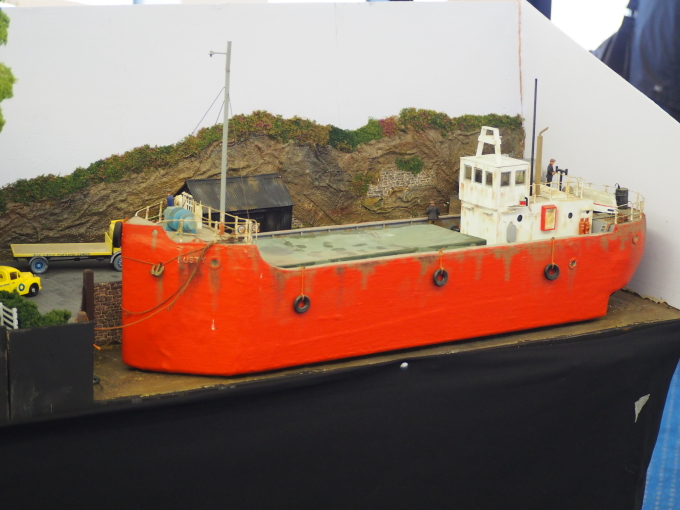
The coastal vessel ‘Rusty’ unloads at Roundwood Quay
Trelissick is a typical branch line station. One platform face is provided and can accommodate 2 coach trains along with two sidings. Most of the goods received in the yard here are usually transferred for onward travel to St Mawes and the Roseland Peninsula, this does however also bring in a steady supply of goods from the numerous farms. Coal traffic is handled in the yard for the surrounded villages and estate house. The traffic is not high enough to merit the whole station yard and to tap into the holiday market the GWR [BR(W)] has had a camping coach on the site during the summer since the 1930s.
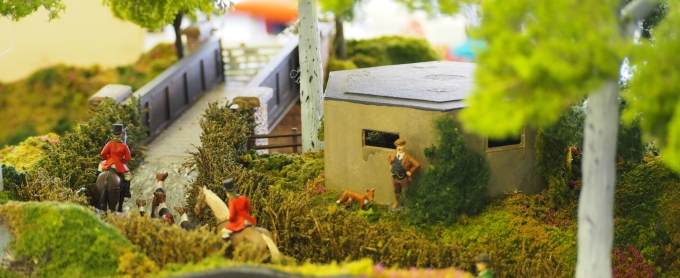
The hunt crosses over the railway bridge past a WW2 pillbox fortification.
The only real interesting feature in the yard is the concrete buffers. This again was a wartime addition. Prior to the D-day landings there was a large build up of the allied forces in this area. Trelissick with its access to Carrick Road was chosen as an ideal location to load the infrastructure and men onto the ships. This is the reason the triangular junction was constructed to avoid the need for a second run around at Falmouth and to keep wartime traffic away from the docks.
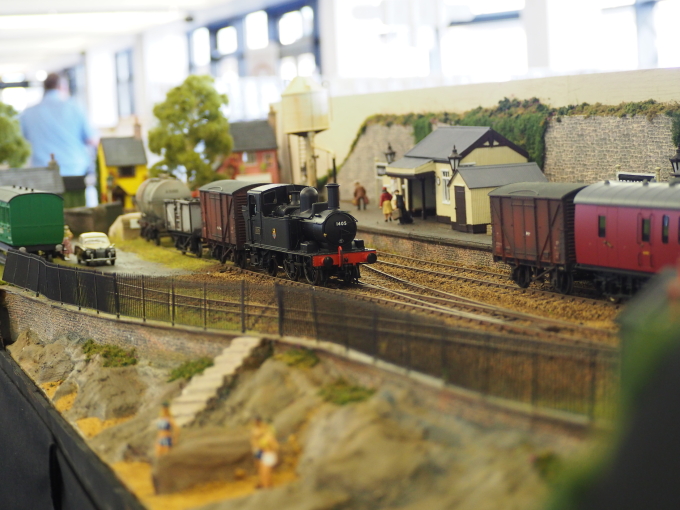
View of the goods yard
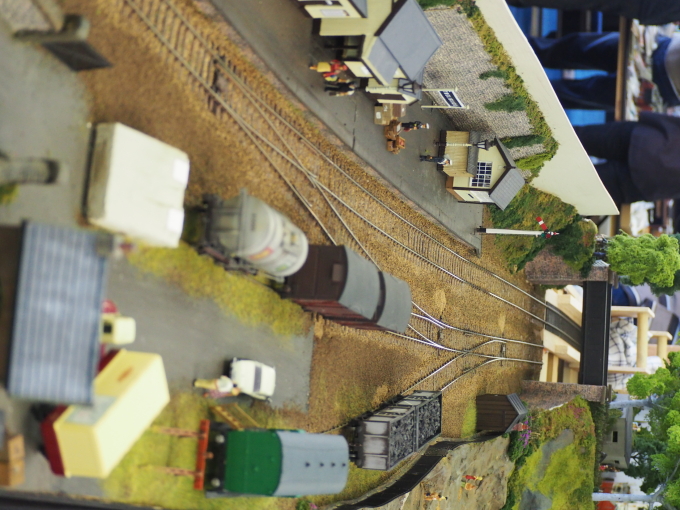
Trelissick goods yard and platforms looking towards the quay.
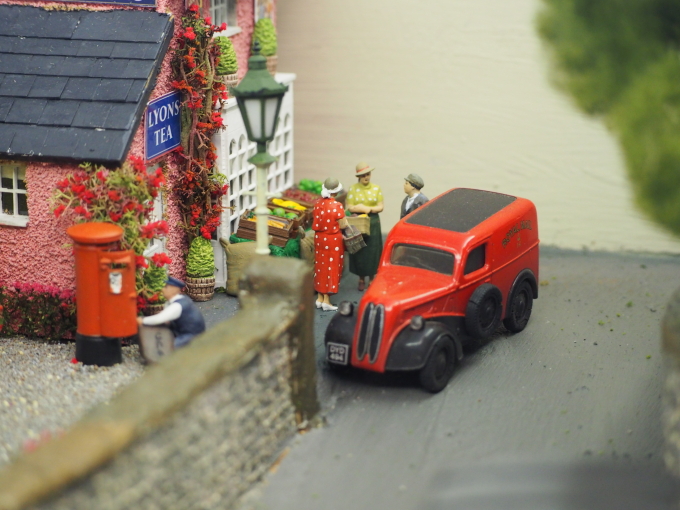
Conversation or gossip? View of the village shop.
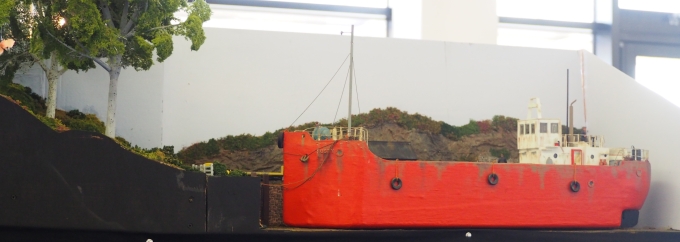
Roundwood Quay
The model is set around the late 1950’s to early 1960s. To the left of the model is a small village scene with a few fishermans cottages and the local shop. The road that separates the cottages from the railway leads down to the King Harry Ferry. Road traffic is the real way to travel and the cars soon back up waiting to cross on the ferry.
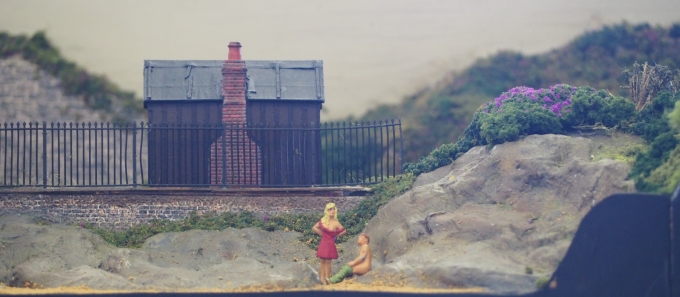
A couple enjoying the sun……..in front of the p-way hut.
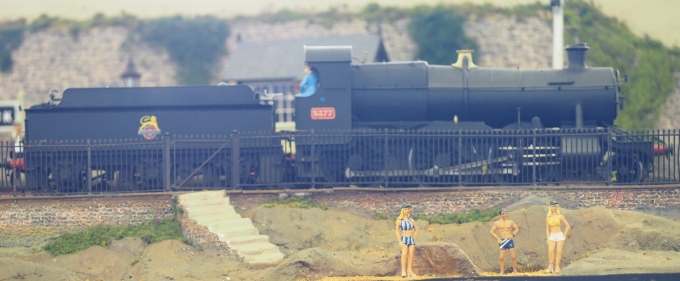
43xx shunts the yard.

The camping coach
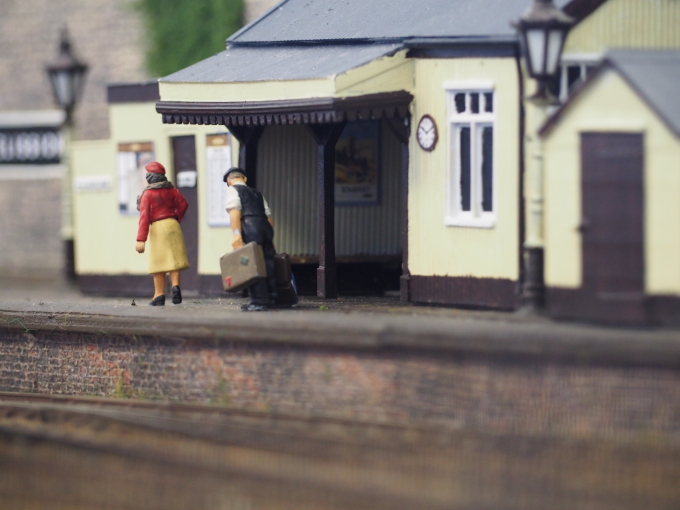
A porter helps a passenger with their luggage from the platform.
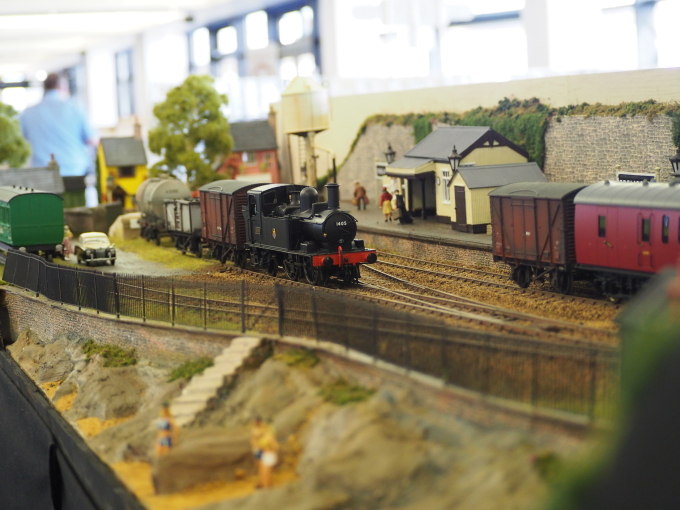
14xx shunts the yard.
